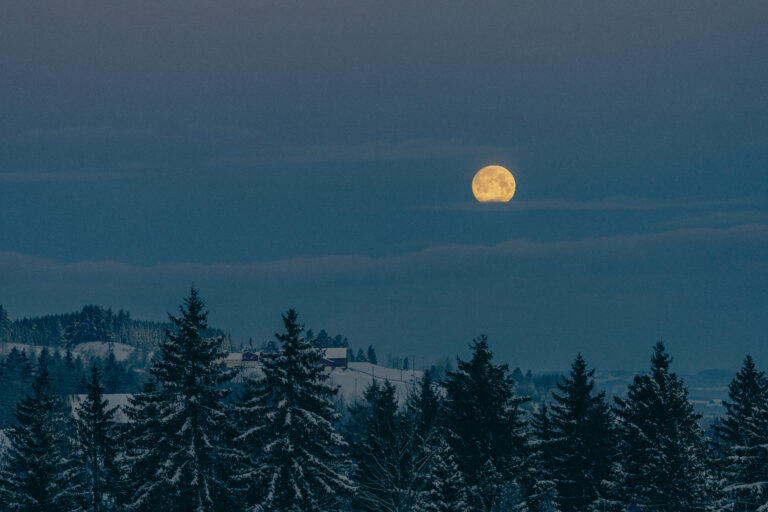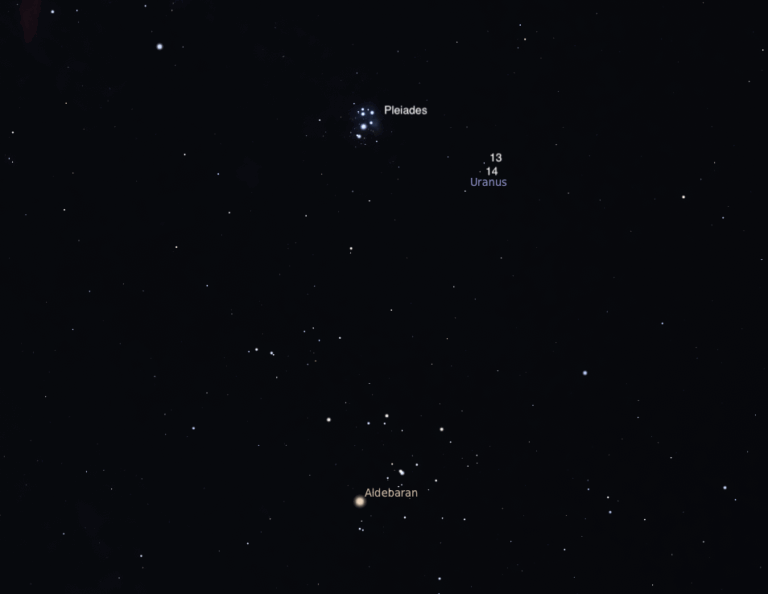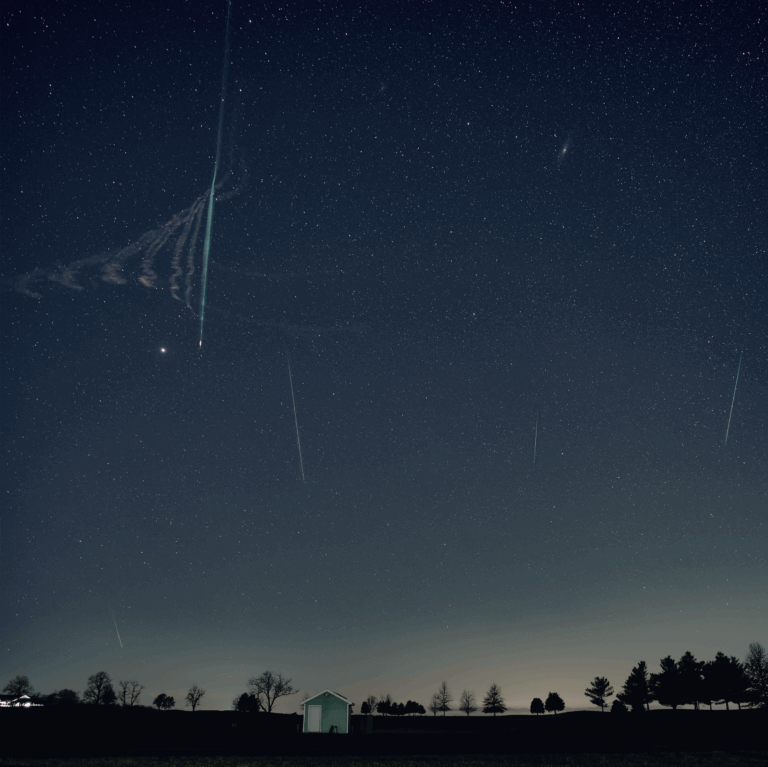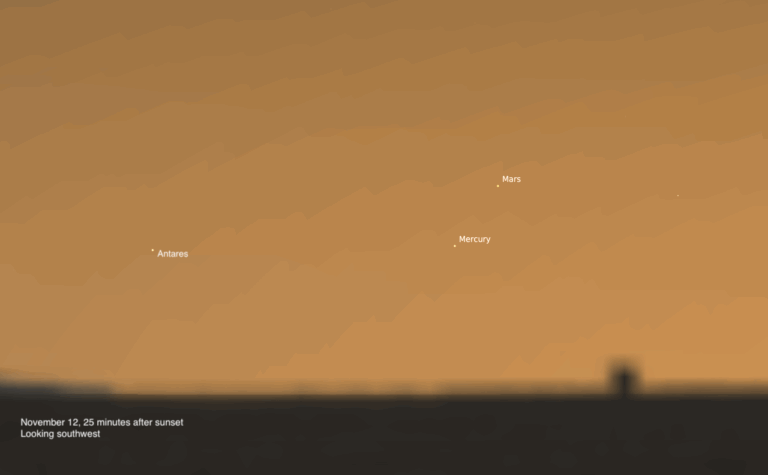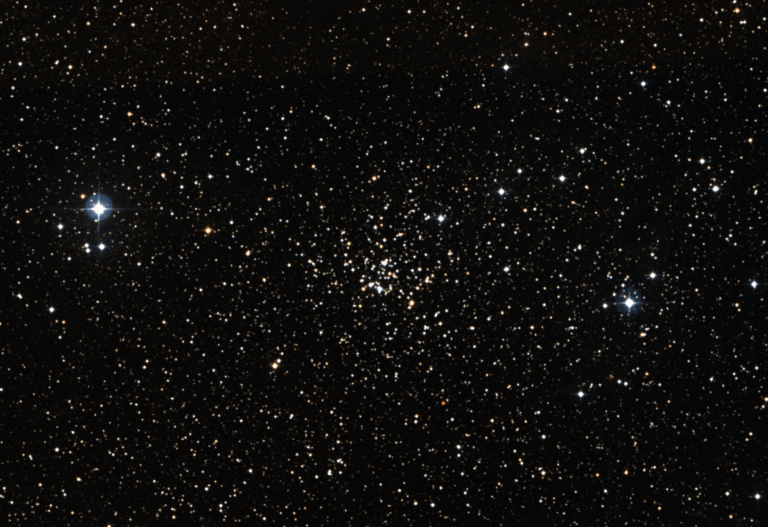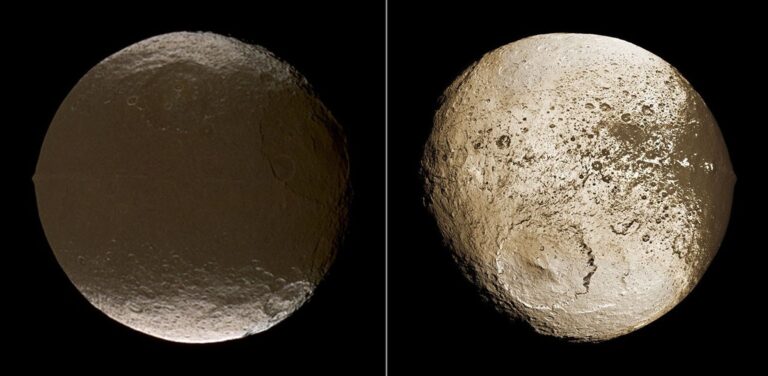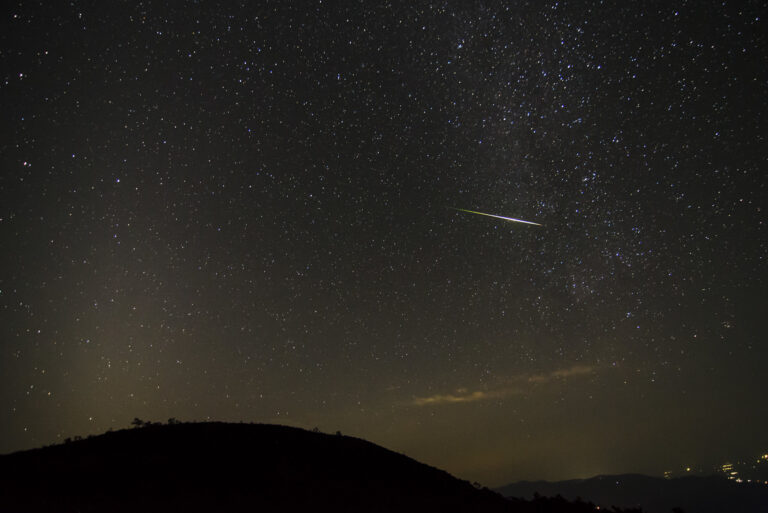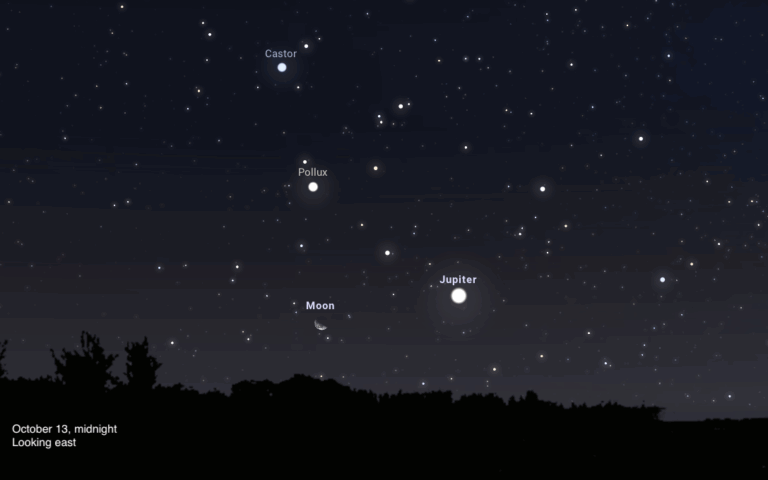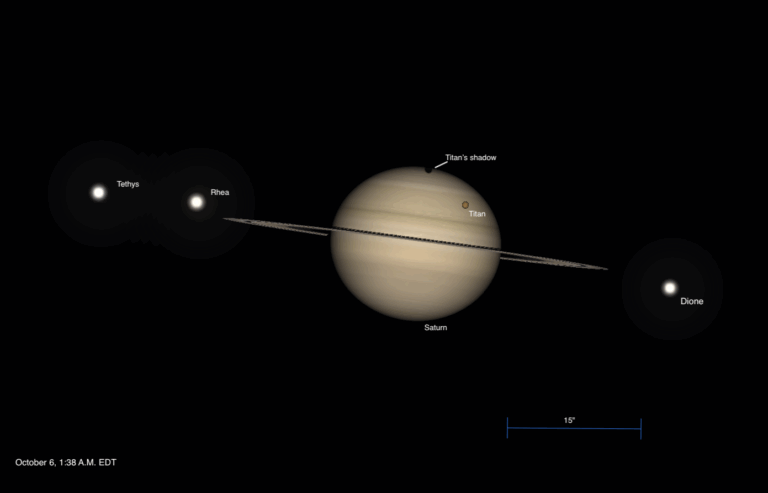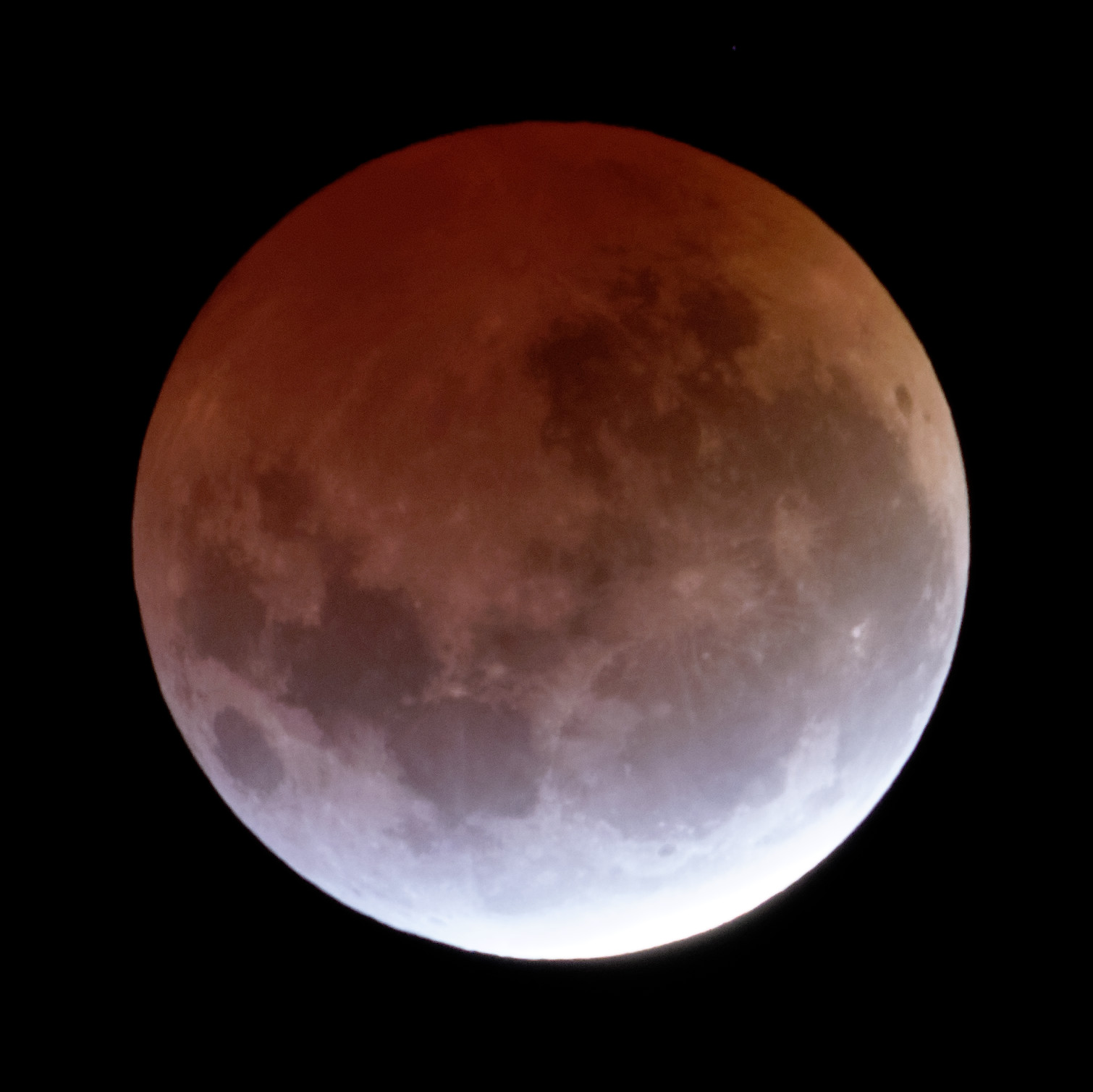
Key Takeaways:
- On September 5th, the constellation Camelopardalis, containing Kemble's Cascade and NGC 1502, will be visible in the northern sky after 11 PM local daylight time.
- Uranus will become stationary on September 6th at 1 AM EDT, transitioning from prograde to retrograde motion, and will be observable in the early morning sky near the Pleiades cluster.
- A full moon, also known as the Corn Moon, will occur on September 7th at 2:09 PM EDT, and a total lunar eclipse will be visible in parts of Africa, Europe, Asia, and Australia.
- On September 11th, an occultation of Saturn's moon Titan will be observable with a telescope, starting shortly after 11 PM EDT, and Mars will pass 2° north of Spica on September 12th at 4 AM EDT.

Sky This Week is brought to you in part by Celestron.
Friday, September 5
Look north late this evening to spot the constellation Camelopardalis slowly rising away from the horizon. Located just beneath W-shaped Cassiopeia around 11 P.M. local daylight time, Camelopardalis is home to a famous asterism called Kemble’s Cascade, a line of several stars that appear to flow like a waterfall into a pool, ending at the open cluster NGC 1502.
You can find the stream of more than a dozen stars using binoculars or any size telescope. Look about 7° west-northwest of 4th-magnitude Beta (β) Camelopardalis, or roughly 6° due west from the midpoint of a line connecting Beta with similarly bright Alpha (α) Cam. The stream is composed of stars ranging from about 7th to 9th magnitude and appears to flow from northwest to southeast on the sky, with NGC 1502 at the southeastern end. The cluster shines at magnitude 5.7 and is about 8’ across. It contains some 45 stars and will appear in binoculars as a soft, compact glow; you’ll have better luck resolving its stars in a telescope. Many observers visualize NGC 1502 as the spray kicked up as the waterfall of stars terminates in a pool at the bottom.
Sunrise: 6:32 A.M.
Sunset: 7:25 P.M.
Moonrise: 6:34 P.M.
Moonset: 3:52 A.M.
Moon Phase: Waxing gibbous (95%)
*Times for sunrise, sunset, moonrise, and moonset are given in local time from 40° N 90° W. The Moon’s illumination is given at 12 P.M. local time from the same location.
Saturday, September 6
Uranus stands stationary at 1 A.M. EDT, bringing its prograde (easterly) motion through Taurus the Bull to an end. Now it will begin moving westward, or retrograde, relative to the background stars, although its motion appears quite minuscule from day to day, thanks to its vast distance of some 1.8 billion miles (2.9 billion kilometers) from Earth.
You can spot Uranus in the early-morning sky shortly after midnight, already 25° high in the east by 1 A.M. local daylight time and rising higher by the hour. It lies to the lower right of the Pleiades star cluster (M45), an easy-to-spot naked-eye grouping of young stars in far western Taurus. To find the planet, you’ll want to employ binoculars or a telescope. From the Pleiades, simply drop about 4.5° southwest to find the magnitude 5.7 ice giant, which lies in a relatively sparse region devoid of similarly bright stars. Look for a dull, “flat” star with a bluish or grayish hue. The tiny disk spans some 4”, clearly nonstellar under close inspection through a telescope.
Now that it will soon begin moving westward, Uranus will slowly approach a pair of 6th-magnitude stars — 13 and 14 Tauri — that lie 4.5° south of the Pleiades. Note the planet’s location tonight and then come back to check it every few weeks as it closes in on the pair, passing south of the two suns late this year.
Sunrise: 6:33 A.M.
Sunset: 7:23 P.M.
Moonrise: 7:01 P.M.
Moonset: 5:04 A.M.
Moon Phase: Waxing gibbous (99%)
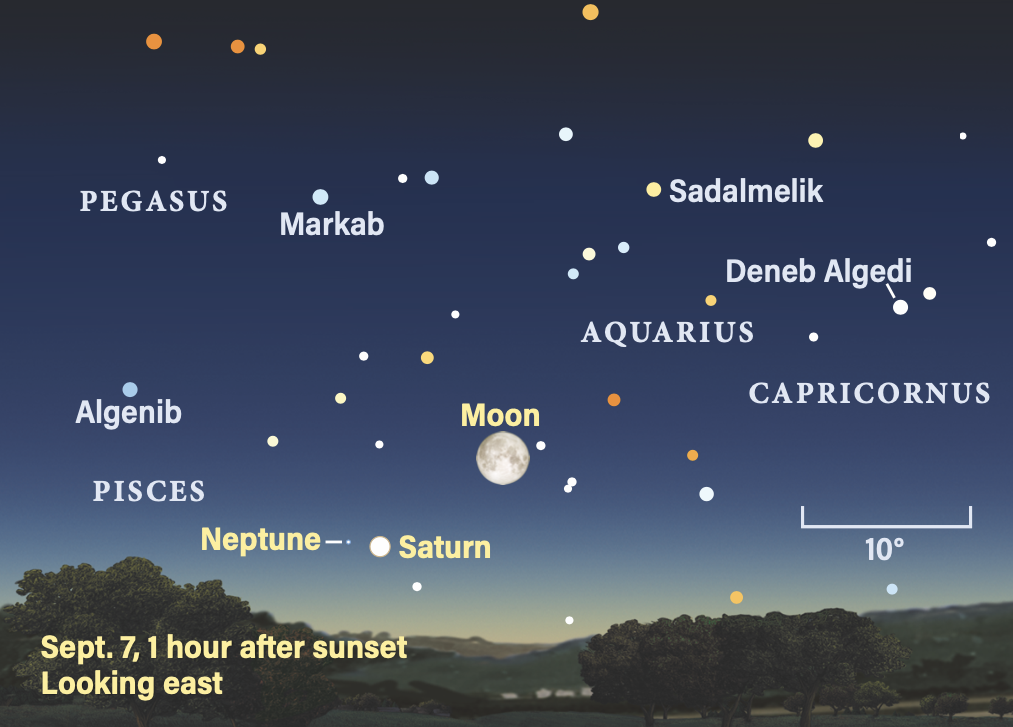
Sunday, September 7
Full Moon occurs this morning 2:09 P.M. EDT. September’s Full Moon is also called the Corn Moon.
Often, September’s Full Moon carries a second name: the Harvest Moon. This name is given to the Full Moon that falls closest to the autumnal equinox, which is September 22 this year. However, this year October’s Full Moon falls slightly closer to the equinox, so next month it will be crowned 2025’s Harvest Moon.
Not to be outdone, however, today’s Full Moon will undergo a total lunar eclipse visible from regions of Africa, Europa, Asia, and Australia, although not from the contiguous U.S. All of Hawaii and parts of Alaska and will see varying degrees of a partial lunar eclipse. The total lunar eclipse will be visible from eastern Africa through western Australia, whereas regions outside these bounds will also still see a partial eclipse. You can visit timeanddate.com‘s page for the eclipse at https://www.timeanddate.com/eclipse/lunar/2025-september-7 for more details on how much of the event your region will see.
Even with no eclipse, the bright Full Moon will be on show both early in the morning before dawn and in the evening sky after sunset. Spending most of the day in Aquarius, the Moon is approaching Saturn and Neptune, located near the Circlet of Pisces. Our satellite will pass north of the two planets tomorrow afternoon.
Sunrise: 6:34 A.M.
Sunset: 7:21 P.M.
Moonrise: 7:26 P.M.
Moonset: 6:17 A.M.
Moon Phase: Full
Monday, September 8
The Moon passes 4° north of Saturn at 4 P.M. EDT. Two hours later, the Moon passes 3° north of Neptune at 6 P.M. EDT.
Both planets rise around 8 P.M. local daylight time in southwestern Pisces. They hang below the Circlet asterism and stand some 30° high in the southeast by 11 P.M. local daylight time. The Moon is now about 7° to their left, with only brighter Saturn (magnitude 0.6) visible to the naked eye. It is the brightest point of light in this region and should still stand out well even with the Moon nearby. Feel free to enjoy the ringed planet with a telescope — its disk now measures 19” across, with its rings stretching nearly 44” along the long axis. They appear quite thin, tilted just 2° to our line of sight. We’ll come back to Saturn later in the week, when its largest and brightest moon undergoes an occultation.
Neptune, meanwhile, shines at magnitude 7.7 and requires optical aid to spot. It is currently 2° northeast of Saturn, hanging less than half a degree due south of a 6th-magnitude field star. The pairing should make it relatively easy to find and spot, roughly half a binocular field from Saturn.
Nearly 2.7 billion miles (4.3 billion km) from Earth, Neptune’s disk appears even smaller than Uranus’. It is just 2” across and may have a faint bluish hue, though this may be a bit harder than usual to pick up on with the bright Moon relatively nearby.
Neptune is quickly nearing opposition later this month; it will reach this point September 23, just two days after Saturn reaches its own opposition.
Sunrise: 6:34 A.M.
Sunset: 7:20 P.M.
Moonrise: 7:50 P.M.
Moonset: 7:31 A.M.
Moon Phase: Waning gibbous (99%)
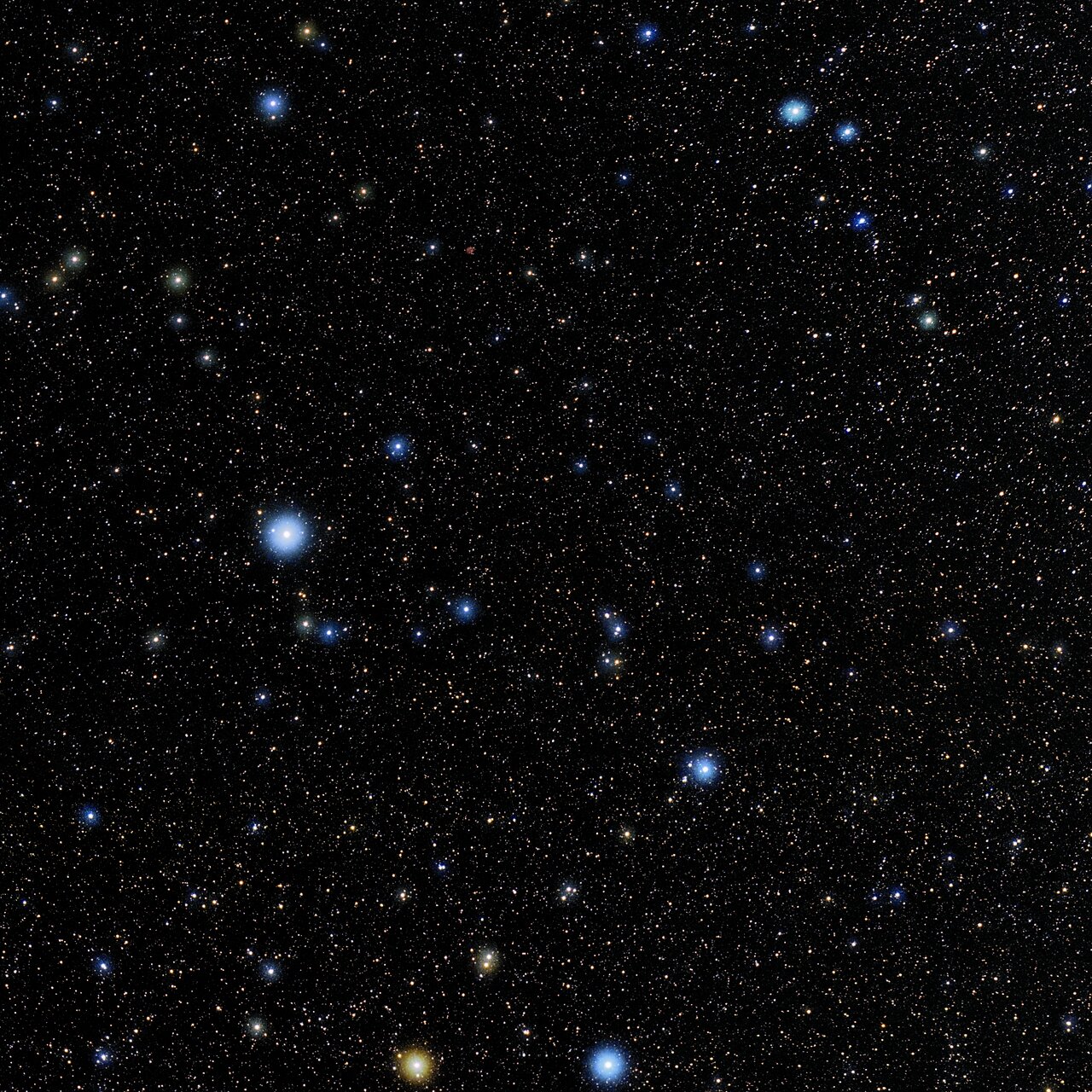
Tuesday, September 9
The bright star Fomalhaut stands prominently in the south late tonight, rising around 8:30 P.M. local daylight time. At magnitude 1.2, it outshines all other stars in this region. Fomalhaut is also cataloged as Alpha Piscis Austrini, the luminary of Piscis Austrinus the Southern Fish. It lies at the eastern end of this constellation, beneath larger Aquarius and to the lower left of Capricornus. According to Jim Kaler’s STARS website, the name Fomalhaut comes from Arabic and means “the mouth of the southern fish.”
Located just 25 light-years from Earth, Fomalhaut is a young star roughly 450 million years old. It weighs in at just under 2 solar masses and is about 1.8 times the width of the Sun. Fomalhaut is also famously surrounded by a large disk of dusty debris — this is a protoplanetary disk, from which a planetary system will someday form. The disk itself reaches out to some five times the orbit of Pluto (were it in our solar system).
Astronomers once thought they’d identified a gas giant planet within the disk; however, later observations showed the object was not actually a planet, but the debris left from a collision between forming planetesimals within the disk.
Fomalhaut is highest just after local midnight, when it stands about 20° above the southern horizon in the mid-U.S. Observers at lower latitudes will see it arc higher through the sky, and vice versa.
Sunrise: 6:35 A.M.
Sunset: 7:18 P.M.
Moonrise: 8:14 P.M.
Moonset: 8:45 A.M.
Moon Phase: Waning gibbous (95%)
Wednesday, September 10
The Moon reaches perigee at 8:10 A.M. EDT this morning. Perigee is the closest point to Earth in the Moon’s orbit, and our satellite will then stand 226,662 miles (364,777km) away.
Venus, currently moving east through the sky, has now passed from Cancer into Leo and rises within the domain of the Lion around 4 A.M. local daylight time, more than two hours before the Sun. Around 5:30 A.M. local daylight time, Venus has reached 15° high in the east and has been followed into the sky by magnitude 1.4 Regulus, which stands about ⅓ as high above the horizon to Venus’ lower left. Regulus is Leo’s bright alpha star, often envisioned as the heart of the Lion. And like a heart contains four chambers, Regulus is a four-star system. Bright Regulus A is a binary that cannot be visually split. The easiest companion to spot lies some 175” (nearly 3’) away to the northwest and glows softly at 8th magnitude. This star is itself a double, with components separated by just 2.5” (and the fainter of which is magnitude 13.5).
Regulus and Venus are more than 11° apart this morning, but that will quickly change. In just over a week, Venus and the Moon will stand in line with Regulus, both within 1° of the star. We’ll definitely check back then!
Sunrise: 6:36 A.M.
Sunset: 7:17 P.M.
Moonrise: 8:42 P.M.
Moonset: 10:01 A.M.
Moon Phase: Waning gibbous (88%)
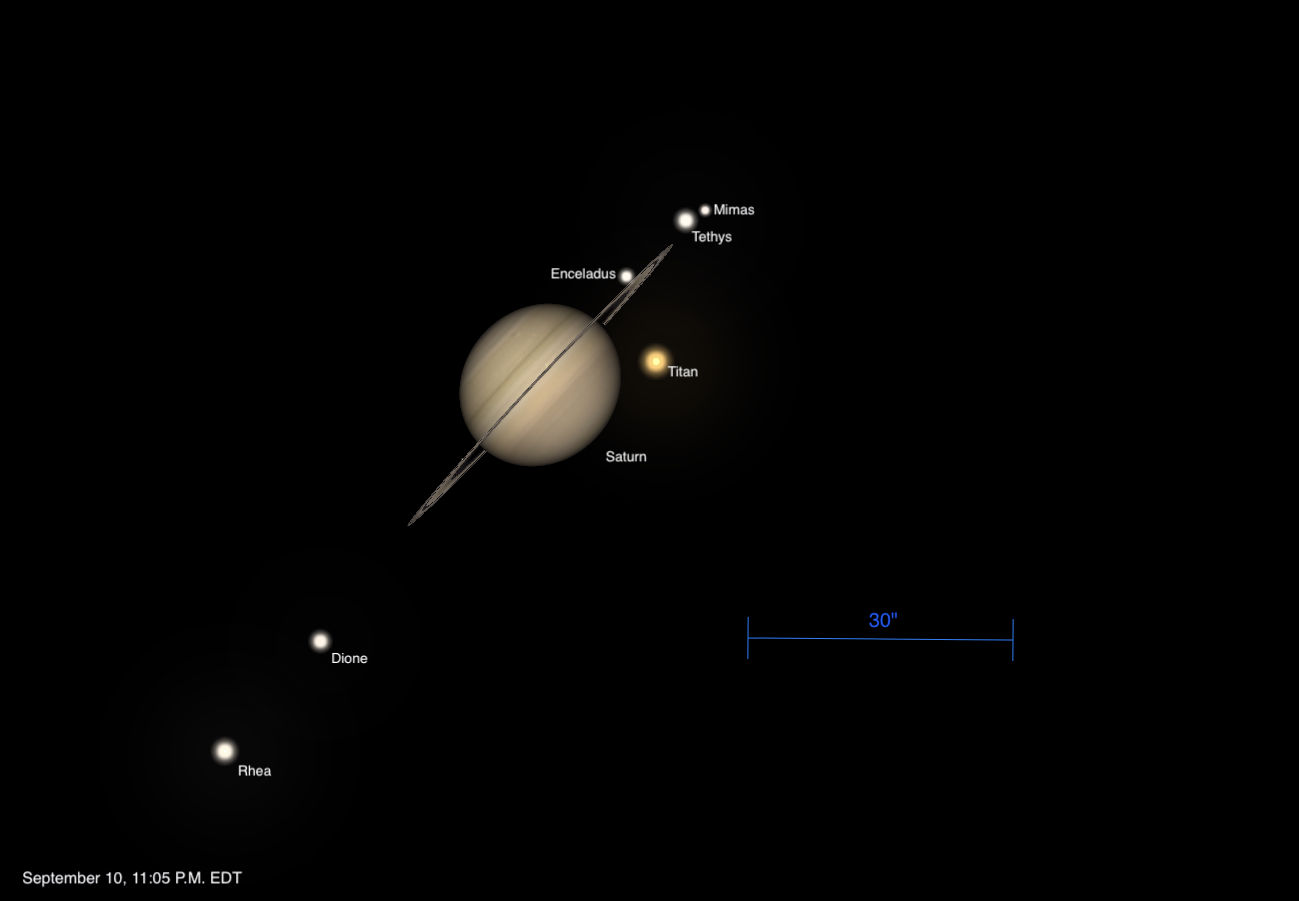
Thursday, September 11
Saturn draws attention tonight as its largest and brightest moon, Titan, slips behind the disk of the planet late this evening in an occultation. You can find Saturn just over 30° high in the southeast tonight, shining at magnitude 0.6 in Pisces. It’s easy to find without optical aid as the brightest point of light in this region of the sky.
You’ll need a telescope to watch the occultation, which starts shortly after 11 P.M. EDT. You’ll see that Titan is closing in on the planet’s southwestern limb, passing south of the rings. Around 11:10 P.M. EDT the moon reaches the planet’s limb and begins passing behind it, fading as more of its surface disappears from view. By 11:33 P.M. EDT, Titan has completely disappeared. It will cross behind the ringed world over the next few hours, emerging from the southeastern limb between about 3:30 A.M. and 4:05 A.M. EDT on the 12th.
As Titan is slipping from view late this evening, several other moons may be visible as well. The easiest to spot will be 10th-magnitude Tethys, Dione, and Rhea. Tethys sits just off the western edge of the rings, while Dione and Rhea are farther off the rings’ eastern side, in that order in terms of distance from the planet. Twelfth-magnitude Enceladus lies just north of the rings on the western side of the planet and 13th-magnitude Mimas sits just beyond Tethys (also to the west), but these moons may be too dim for small or even medium scopes to spot.
Sunrise: 6:37 A.M.
Sunset: 7:15 P.M.
Moonrise: 9:16 P.M.
Moonset: 11:19 A.M.
Moon Phase: Waning gibbous (80%)
Friday, September 12
Mars passes 2° north of Virgo’s bright alpha star Spica at 4 A.M. EDT. Neither is visible at that time, but you can catch them in the evening sky shortly after sunset. You’ll want to be quick, though — they set before 9 P.M. local daylight time and are already low in the west 40 minutes after sunset. At that time, the pair is 5° high, with Mars sitting to the upper right of Spica. Mars is magnitude 1.6, slightly fainter than magnitude 1.0 Spica. They are still 2° apart, visible together in the same field of view when using binoculars or your telescope’s finder scope. If you do look for them with optical aid, make sure you wait to pull out your equipment until the Sun is fully below the horizon from your location, which may occur at a slightly different time than that given below. The clearer your western horizon, the better, and you may want to try to get to a location slightly higher than your surroundings as well.
The now-waning Moon passes 5° north of Uranus at 10 P.M. EDT, around the time the pair is rising for those on the U.S. East Coast. The Moon lies to the lower left of the Pleiades star cluster — a few hours earlier, our satellite occulted several stars in this cluster, visible from parts of Europa, Asia, and the Middle East.
Sunrise: 6:38 A.M.
Sunset: 7:13 P.M.
Moonrise: 9:56 P.M.
Moonset: 12:37 P.M.
Moon Phase: Waning gibbous (70%)

